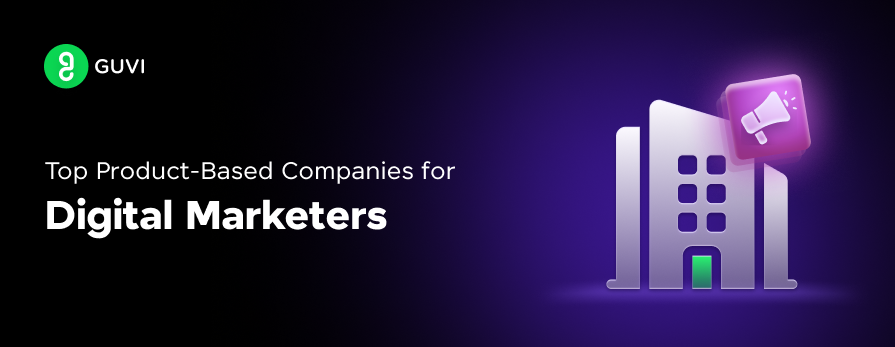
14 Crucial Applications and Role of IT in Supply Chain Management
Oct 01, 2024 9 Min Read 17110 Views
(Last Updated)
Can you imagine a world without Information Technology (IT)? In today’s digital age, IT is intertwined with every facet of our lives, revolutionizing how we communicate, work, and solve problems. Supply chain management (SCM) is no exception.
As global supply chains become more intricate and demanding, the role of information technology in supply chain management becomes a pivotal force in reshaping these networks. We can visibly see that today’s efficient supply chain management systems would come down without the staggering contribution of informational technology.
In this blog, we will explore various aspects where IT has revolutionized SCM, including inventory management, demand forecasting, logistics, and more, showcasing the multifaceted role of information technology in supply chain management. If you’re looking for an all-in-one analysis of the role of IT in supply chain management, you’re in for a great ride. Let’s roll, shall we?
Table of contents
- Role of IT in Supply Chain Management
- Inventory Management
- Demand Forecasting
- Order Processing and Fulfillment
- Logistics and Transportation
- Supplier Relationship Management (SRM)
- Warehouse Management Systems (WMS)
- Supply Chain Visibility
- Collaboration and Communication
- Quality Control and Traceability
- Risk Management
- Integrated Supply Chain
- Increased Productivity
- Cost Reduction
- Product Improvement
- Concluding Thoughts
- FAQs
- What is the role of IT in supply chain management?
- How does IT improve inventory management in SCM?
- Can IT in SCM help in reducing operational costs?
- What technologies are commonly used in IT-enabled supply chains?
- How does IT contribute to risk management in supply chains?
- What is the future of IT in supply chain management?
Role of IT in Supply Chain Management
Supply Chain Management is a critical component for businesses that strive to maintain efficiency and competitiveness in an increasingly complex marketplace.
Having said that, Supply Chain Management (SCM) is heavily dependent on Information Technology (IT) to carry out numerous vital operations like monitoring, development, operation, and cost reduction across various key elements of supply chain management.
Here are some of the key roles of IT in Supply Chain Management:
1. Inventory Management
Inventory management serves as a cornerstone of efficient supply chain operations, ensuring that goods are available when needed while minimizing excess stock. By precisely controlling inventory levels, businesses can reduce costs and increase responsiveness to market demand.
Information technology introduces an unprecedented level of precision and efficiency to this vital function. It transforms traditional practices into dynamic, data-driven processes.
Here’s how IT plays a major role in Inventory Management:
- Real-Time Inventory Tracking: Advanced IT systems enable continuous monitoring of inventory levels, providing updates as sales are made and stock is replenished. This helps prevent stockouts and overstock situations.
- Automated Reordering Systems: By setting reorder points in an IT-driven system, companies can automate their purchasing processes. This ensures that new orders are placed just in time when inventory levels drop below predefined thresholds.
- Identification of Obsolete Items: IT tools can analyze sales data to identify slow-moving or obsolete items, allowing businesses to make informed decisions about markdowns or product discontinuations.
- Enhanced Forecasting Accuracy: Integration of point-of-sale (POS) systems with inventory management software allows for more accurate demand forecasting based on real-time data.
- Barcode and RFID Systems: Utilization of barcode and RFID technology in inventory management automates the tracking of products throughout the supply chain. This not only speeds up the process but also reduces human error.
2. Demand Forecasting
Demand forecasting is crucial for aligning production and procurement strategies with market needs. By accurately predicting future demand, companies can optimize their resources, minimize waste, and better serve their customers.
Information technology enhances the accuracy and efficiency of these forecasts by analyzing vast amounts of data from various sources, including historical sales, market trends, and external factors like economic indicators and seasonal variations.
Here’s how IT plays a major role in enhancing demand forecasting within supply chain management:
- Historical Data Analysis: IT systems utilize historical sales data to identify patterns and trends. This foundational data analysis helps in predicting future demand with higher accuracy.
- Market Trend Evaluation: By analyzing current market dynamics and consumer behavior, IT tools help companies adapt their strategies to meet changing demands.
- Integration with External Factors: Advanced forecasting tools incorporate external variables such as weather conditions, economic shifts, and political events, which can significantly impact demand.
- Machine Learning Models: These models continuously learn from new data, improving the precision of demand forecasts over time without explicit programming.
- Scenario Planning: IT enables companies to simulate various business scenarios and their impact on demand, allowing for better strategic planning and resource allocation.
3. Order Processing and Fulfillment
Effective order processing and fulfillment are essential to customer satisfaction and operational efficiency in supply chain management. By ensuring that customer orders are processed and fulfilled accurately and promptly, companies can enhance customer loyalty and streamline their internal operations.
Information technology plays a pivotal role in modernizing these processes through automation and integration, making them faster and more error-resistant.
Here’s how IT plays a major role in Order Processing and Fulfillment:
- Automated Order Entry: IT systems automatically capture and process customer orders, reducing manual entry errors and speeding up the order-to-delivery cycle.
- Real-Time Order Status Tracking: Customers and businesses can monitor the status of orders in real-time, enhancing transparency and enabling better customer service.
- Dynamic Order Routing: IT solutions optimize the routing of orders through the supply chain, selecting the most efficient paths and methods for order fulfillment.
- Integrated Supply Chain Communications: Seamless integration between suppliers, warehouses, and transportation services ensures that each component of the order fulfillment process is synchronized, minimizing delays.
- Advanced Analytics for Inventory Allocation: IT systems use advanced analytics to decide how to allocate inventory to orders based on various factors such as delivery times, inventory levels, and customer priorities.
Also Read: Top IT Jobs for Commerce Students: A Lucrative Career Path
4. Logistics and Transportation
Logistics and transportation management are critical components of supply chain management, ensuring that goods are delivered efficiently and cost-effectively. Effective logistics operations can significantly reduce overhead costs and improve service levels by optimizing delivery routes and managing freight operations adeptly.
Information technology acts as a catalyst in this sector, enhancing visibility, improving coordination, and enabling data-driven decision-making.
Here’s how IT plays a major role in Logistics and Transportation:
- Route Optimization: IT systems use algorithms to calculate the most efficient routes for delivery vehicles, considering factors such as traffic, distance, and vehicle load capacity. This reduces fuel consumption and delivery times.
- Carrier Contract Management: Automated systems help manage contracts with shipping carriers, ensuring that terms are adhered to and the most cost-effective options are used.
- Real-Time Shipment Tracking: GPS and other tracking technologies provide real-time updates on the location of shipments, enhancing the ability to respond to delays or reroute shipments as necessary.
- Enhanced Load Planning: Sophisticated software assists in the optimal placement and scheduling of goods on transportation vehicles, maximizing space utilization and minimizing the risk of damage.
- Predictive Maintenance for Transportation Vehicles: By monitoring vehicle health data, IT systems can predict when maintenance is needed, preventing breakdowns and extending the lifespan of transportation assets.
Also Read: Top 5 IT Jobs for Economics Students
5. Supplier Relationship Management (SRM)
Supplier Relationship Management (SRM) is a systematic approach to developing and managing partnerships with those who supply goods and services to an organization. It is fundamental to achieving seamless production and procurement cycles and plays a crucial role in maintaining a competitive edge.
Information technology enhances SRM by providing tools that streamline communication, improve contract management, and facilitate collaborative decision-making.
Here’s how IT plays a major role in Supplier Relationship Management:
- Performance Evaluation Systems: IT tools help assess supplier performance on various metrics such as delivery time, quality, and compliance, ensuring that only the most reliable suppliers are retained.
- Electronic Data Interchange (EDI): EDI systems facilitate the seamless exchange of documents, such as purchase orders and invoices, between businesses and suppliers, speeding up transactions and reducing errors.
- Contract Management Platforms: These platforms store and manage contracts digitally, providing easy access to documents and ensuring compliance with agreed terms.
- Collaborative Forecasting and Replenishment: IT systems enable real-time collaboration between suppliers and buyers to align production plans with actual market demand, reducing excess inventory and shortages.
- Risk Management Tools: Advanced analytics and monitoring tools help identify risks in the supply chain, such as supplier financial health or geopolitical issues that may affect supply continuity.
6. Warehouse Management Systems (WMS)
Warehouse management is pivotal in supply chain operations, focusing on the efficient storage and movement of goods within a warehouse. Effective warehouse management ensures that products are easily accessible, storage costs are minimized, and order fulfillment is expedited.
Information technology, particularly through Warehouse Management Systems (WMS), plays a critical role in modernizing these activities by automating tasks, optimizing space, and improving accuracy.
Here’s how IT plays a major role in Warehouse Management Systems:
- Automated Picking and Packing Processes: WMS provides tools for automating the picking and packing of orders, reducing manual labor and minimizing errors.
- Optimized Storage Solutions: IT systems analyze the dimensions and turnover rates of products to suggest the most efficient storage methods and locations, maximizing space utilization.
- Enhanced Inventory Accuracy: Advanced tracking technologies such as barcode scanners and RFID tags are integrated into WMS to ensure real-time, accurate inventory tracking and reduce discrepancies.
- Streamlined Receiving and Shipping: WMS automates the processes of receiving new shipments and processing outbound orders, speeding up operations and reducing bottlenecks.
- Labor Management: WMS includes features that track worker performance and help allocate human resources more effectively to meet demand peaks and lulls.
7. Supply Chain Visibility
Supply chain visibility is the ability to track each component of a product’s journey from supplier to customer. It is essential for managing operations effectively, responding to disruptions proactively, and ensuring transparency across all stages of the supply chain.
Information technology enhances supply chain visibility by providing real-time data on inventory levels, production status, and logistical movements, thereby enabling organizations to make informed decisions quickly.
Here’s how IT plays a major role in Supply Chain Visibility:
- Real-Time Data Access: IT systems offer real-time insights into every stage of the supply chain, from raw materials acquisition to final product delivery, allowing businesses to monitor progress and react to issues instantly.
- Integrated Dashboards: Centralized dashboards aggregate data from various points in the supply chain, providing a holistic view of operations and facilitating quicker decision-making.
- GPS and RFID Tracking: These technologies track products throughout the supply chain, offering precise location data and helping to manage and mitigate risks associated with transportation and storage.
- Predictive Analytics: IT tools analyze data to forecast potential disruptions, such as supplier delays or increased demand, allowing companies to preemptively address these issues.
- Automated Alerts and Notifications: Systems send automatic updates and alerts about critical events in the supply chain, such as deviations from planned routes or inventory levels falling below safety stock, ensuring that stakeholders can take immediate action.
8. Collaboration and Communication
Collaboration and communication are the backbones of effective supply chain management, enabling all stakeholders—including suppliers, manufacturers, distributors, and retailers—to work in harmony.
Effective communication ensures that information flows smoothly between parties, leading to better decision-making and more synchronized operations. Information technology enhances these processes by providing platforms and tools that facilitate real-time, reliable, and efficient information exchange.
Here’s how IT plays a major role in Collaboration and Communication in Supply Chain Management:
- Unified Communication Platforms: These platforms integrate various forms of communication, such as video conferencing, instant messaging, and email, allowing stakeholders to interact more effectively regardless of their location.
- Shared Data Repositories: IT systems provide centralized databases where documents and information can be stored and accessed by authorized personnel across the supply chain, ensuring consistency and availability of information.
- Real-time Collaboration Tools: Tools like cloud-based project management software enable teams to work together on planning and execution tasks in real time, enhancing responsiveness and agility.
- Automated Information Exchange: Automation of data exchange through systems like EDI reduces the need for manual input, decreases errors, and speeds up transaction times.
- Mobile Solutions: Mobile apps and platforms ensure that managers and field workers can access and update critical information on the go, which is particularly useful for dynamic environments like logistics and on-site operations.
9. Quality Control and Traceability
Quality control and traceability are essential aspects of supply chain management, particularly in industries where regulatory compliance and product integrity are paramount.
Effective quality control ensures that products meet established standards and specifications, while traceability allows for the tracking of products throughout the supply chain, crucial for addressing recalls and verifying product origins.
Information technology greatly enhances these processes by integrating sophisticated tracking systems and quality management tools.
Here’s how IT plays a major role in Quality Control and Traceability:
- Barcode Scanning and RFID Tags: These technologies allow for the automatic identification and data capture of products at every stage of the supply chain, from production to final delivery, facilitating real-time tracking and inventory management.
- Serialization: IT systems assign unique identifiers to individual units, making it possible to track products throughout their lifecycle and ensure compliance with safety and quality standards.
- Automated Quality Inspections: Advanced imaging and sensor technologies perform quality checks during manufacturing and packaging processes, detecting defects and deviations from standards automatically.
- Data Analytics for Quality Assessment: IT tools analyze data collected on product quality to identify trends and potential issues before they affect larger batches or final products.
- Integrated Compliance Management: Systems manage regulatory documentation and ensure that all aspects of the supply chain comply with local and international standards, reducing the risk of legal or financial penalties.
10. Risk Management
Risk management in supply chain management involves identifying, assessing, and mitigating potential disruptions and vulnerabilities within the supply chain.
Effective risk management ensures business continuity, protects against financial losses, and maintains customer trust. Information technology plays a crucial role in enhancing risk management capabilities through predictive analytics, scenario modeling, and comprehensive risk assessment tools.
Here’s how IT plays a major role in Risk Management:
- Predictive Analytics: IT systems use historical data and machine learning models to predict potential supply chain disruptions before they occur, allowing businesses to implement preventative measures.
- Scenario Modeling: Advanced software enables companies to simulate various risk scenarios and their potential impact on the supply chain, helping in strategic planning and response preparation.
- Real-Time Monitoring Systems: These systems provide continuous surveillance of supply chain operations, identifying risks associated with natural disasters, political unrest, or supplier instability as they arise.
- Risk Assessment Tools: Automated tools assess the potential impact of identified risks, prioritize them based on severity, and suggest mitigation strategies.
- Integrated Risk Communication: Effective communication channels ensure that all stakeholders are informed of risks in a timely manner, facilitating coordinated risk management efforts across the supply chain.
11. Integrated Supply Chain
An integrated supply chain is a cohesive framework where all functions—procurement, manufacturing, distribution, and retail—are closely synchronized to enhance efficiency and responsiveness.
Achieving this integration involves the seamless flow of information and the strategic alignment of operations across all levels of the supply chain.
Information technology is indispensable in creating such an integrated environment, as it allows for the comprehensive coordination and optimization of all supply chain activities.
Here’s how IT plays a major role in building Integrated Supply Chain:
- Centralized Data Platforms: IT systems consolidate data from various sources within the supply chain, providing a single source of truth that enhances decision-making and reduces inconsistencies.
- Automated Workflow Coordination: Automation technologies streamline processes across different supply chain segments, ensuring that actions are aligned and that information flows without barriers.
- Advanced Planning Systems: Sophisticated planning tools integrate data from across the supply chain to optimize production schedules, inventory levels, and delivery routes in real time.
- Cross-Functional Visibility: IT solutions offer visibility into every aspect of the supply chain, from supplier performance to customer demand, facilitating better resource allocation and responsiveness to market changes.
- IoT and Smart Technologies: The use of IoT devices and smart technologies in the supply chain collects and analyzes data in real time, enabling dynamic adjustments and enhanced synchronization between operations.
12. Increased Productivity
In supply chain management, productivity is a measure of how effectively resources are utilized to meet customer demands and maintain smooth operations.
Higher productivity leads to increased operational efficiency, reduced costs, and improved customer satisfaction. Information technology plays a vital role in enhancing productivity by automating processes, facilitating better resource management, and providing timely data for decision-making.
Here’s how IT plays a major role in increasing productivity in Supply Chain Management:
- Process Automation: Automated systems handle repetitive tasks such as order processing, inventory updates, and billing, freeing up human resources for more strategic activities and reducing the likelihood of errors.
- Enhanced Data Flow: IT tools ensure that data flows seamlessly between different stages of the supply chain, reducing delays and improving the speed of operations.
- Resource Optimization: Advanced analytics and simulation tools help in optimal resource allocation, ensuring that each part of the supply chain operates at peak efficiency.
- Performance Monitoring: IT systems continuously monitor the performance of various supply chain components, allowing managers to identify inefficiencies and implement corrective measures promptly.
- Collaborative Tools: Enhanced communication tools enable better coordination among team members and across departments, leading to faster resolution of issues and more streamlined operations.
13. Cost Reduction
Cost reduction is a fundamental objective in supply chain management, aiming to decrease expenses without compromising on quality or customer satisfaction.
Effective cost management can enhance a company’s competitive advantage by optimizing resource use and improving profitability. Information technology plays an integral role in achieving these cost savings by enabling more precise planning, reducing waste, and automating routine tasks.
Here’s how IT plays a major role in cost reduction in supply chain management:
- Automated Procurement Systems: These systems streamline the procurement process, reducing the costs associated with purchasing by ensuring that materials are bought at the best prices and terms.
- Efficient Inventory Management: IT tools help maintain optimal inventory levels, minimizing costs related to overstocking and understocking, and reducing the need for expensive emergency orders.
- Transportation Management Systems: Advanced software optimizes delivery routes and loads, cutting down on fuel consumption and vehicle maintenance costs.
- Energy Management Systems: IT can monitor and control energy usage in warehouses and production facilities, significantly reducing utility costs.
- Supplier Integration: By integrating suppliers into the IT framework, companies can reduce transaction costs and improve negotiation capabilities, securing better prices and terms.
14. Product Improvement
Product improvement in supply chain management focuses on enhancing the quality, features, and appeal of products to meet customer expectations and gain market share. This involves continuous innovation and responsiveness to market demands.
Information technology facilitates this process by providing insights into market trends, customer feedback, and performance metrics, allowing for agile and informed decision-making.
Here’s how IT plays a major role in product improvement:
- Market Trend Analysis: IT systems analyze market data and consumer trends to identify what features or improvements are most likely to satisfy current and future customer demands.
- Customer Feedback Systems: Integrated feedback systems collect and analyze customer reviews and complaints, providing direct input into product development cycles.
- Rapid Prototyping Tools: Advanced IT tools like 3D printing technology allow for the quick creation of prototypes, enabling faster iteration and refinement of product designs.
- Performance Tracking: IT tools track the performance of products in various markets and demographics, offering insights that guide further improvements and innovations.
- Collaborative Product Development: IT enables collaboration between different departments (such as R&D, marketing, and production) and even with external partners, fostering innovation and speeding up product development processes.
Concluding Thoughts
In conclusion, the integration of information technology within supply chain management has been fundamental in enabling more efficient and accurate operations and has fundamentally transformed the landscape of global commerce.
As we have seen, from improving inventory accuracy to facilitating seamless communication across continents, IT has become indispensable in modern supply chain strategies.
Embracing these technological advancements offers businesses the agility and insight required to thrive in today’s fast-paced market environments. Let’s continue to leverage IT innovations to foster more robust, dynamic, and resilient supply chains.
Also Read: 7 Best High-Paying IT Jobs For Arts Students
FAQs
IT plays a crucial role in enhancing the efficiency, accuracy, and speed of supply chain operations by automating processes, providing real-time data, and facilitating communication across the supply chain network.
IT systems help track inventory levels in real time, automate reordering processes, and analyze data to predict inventory needs, significantly reducing the risk of stockouts and overstock situations.
Yes, IT can significantly reduce costs by optimizing route planning, automating warehouse operations, and improving inventory management, all of which decrease labor costs and wastage while increasing overall efficiency.
Common technologies include Warehouse Management Systems (WMS), Transportation Management Systems (TMS), Real-Time Location Systems (RTLS), Electronic Data Interchange (EDI), and advanced analytics and machine learning models.
IT enhances risk management by providing tools for predictive analytics, scenario planning, and real-time monitoring, which help anticipate and mitigate potential disruptions in the supply chain.
The future of IT in SCM is likely to be driven by further advancements in artificial intelligence, machine learning, and blockchain technology, which will enhance transparency, efficiency, and security across the supply chain.

























![Top 10 Mistakes to Avoid in Your Data Science Career [2025] 6 data science](https://www.guvi.in/blog/wp-content/uploads/2023/05/Beginner-mistakes-in-data-science-career.webp)



![Top React Interview Questions and Answers! [Updated] 10 React Interview Questions](https://www.guvi.in/blog/wp-content/uploads/2022/01/Top-React-Interview-Questions-and-Answers.webp)

Did you enjoy this article?